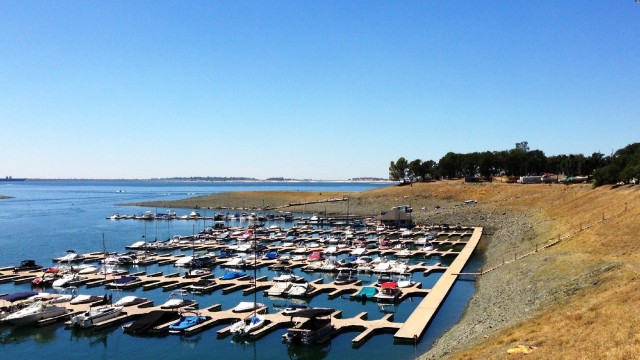
The people who dock their boats at Folsom Lake, about 25 miles east of Sacramento, keep track of how dry the reservoir is by how many steps it takes to get from the parking lot to the floating dock.
In the spring, when melting snow and rainfall fill the lake’s basin, less than ten steps peek out from above the water. Last week, the number was 80. Jeff Gomez said he made sure to count as he trekked up and down the stairs eight different times. “I came down to refuel the boat,” Gomez said as he caught his breath after dragging a cooler down the 80 steps. “That took two trips. Now this was two trips.”
Gomez and his family were getting ready for one of their final boat rides of the year. Folsom Lake is at half its capacity, and low water levels will force Gomez and everyone else who docks their boats in the lake to remove their crafts from the water by Sunday, August 11.
It’s not unusual for Folsom Lake to lose water over the course of the summer, but the boat-removal order typically comes in the fall, not early August. “It’s not shocking, because we expected it. Lack of snow, lack of rain” said Gomez as he prepped his speedboat for an afternoon of tubing. “It’s kind of sad, though.”
“It Just Fell Off The Map”